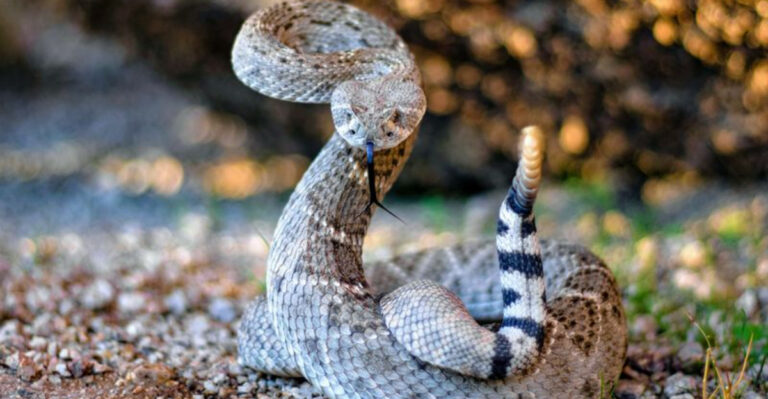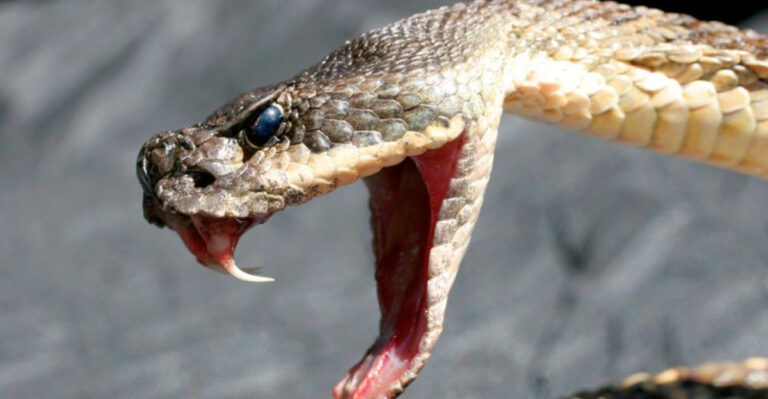Bluebottles: Beautiful To Look At, But Dangerous To Touch – Explore The Four Species
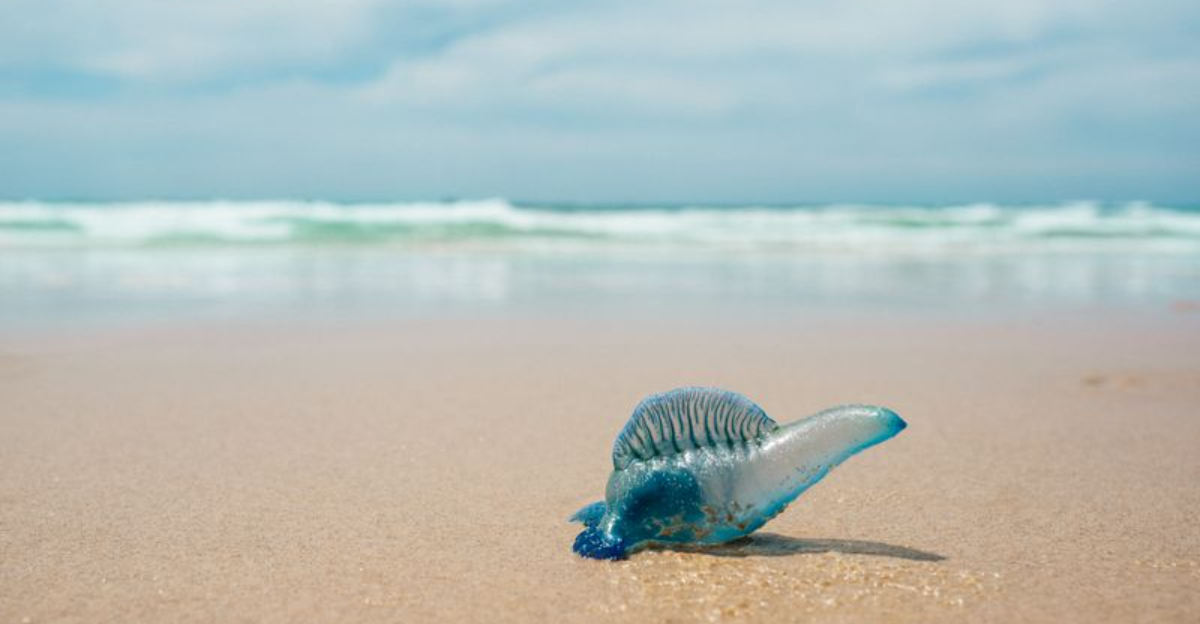
Floating across our oceans like ghostly blue balloons, bluebottles captivate beachgoers with their striking appearance.
These fascinating creatures aren’t actually jellyfish but colonial organisms made up of specialized polyps working together.
While their translucent blue bodies might tempt you closer for a better look, their trailing tentacles pack a painful punch that can leave unwary admirers with serious stings.
1. Four Different Species You Should Know

Bluebottles are fascinating marine creatures, known for their vibrant colors and unique appearance. There are four main species of bluebottles, each with distinct features and habitats.
The most common is Physalia physalis, also known as the Portuguese Man O’ War, found mainly in the Atlantic and Pacific Oceans. Other species, like Physalia utriculus, Physalia magnus, and Physalia pelagica, each have their own specific environments but share the same dangerous beauty, with potent stings that can cause harm to humans.
2. Not Actually Jellyfish
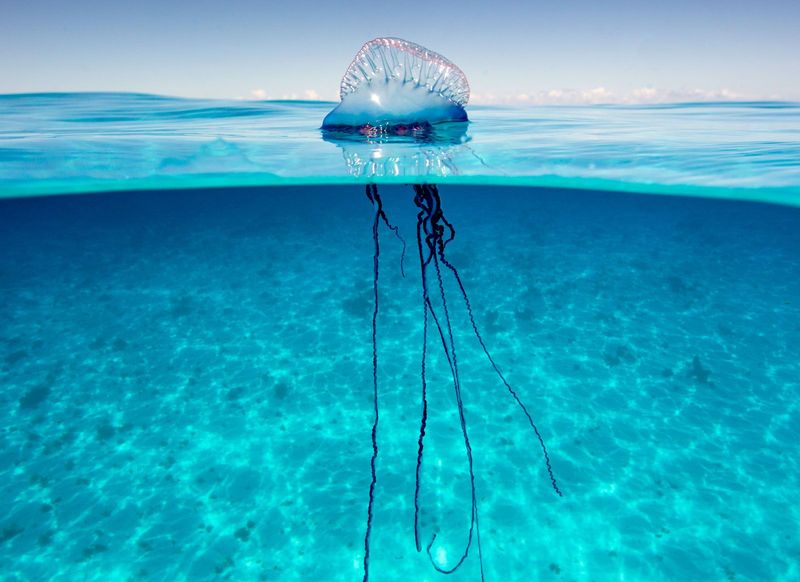
Surprise! Those beautiful blue menaces aren’t jellyfish at all. Bluebottles belong to a group called siphonophores – colonial organisms where many specialized animals work together as one.
Each bluebottle consists of four different polyp types handling specific jobs like floating, catching food, digesting, or reproducing. Think of them as nature’s ultimate team players!
3. Masters Of The Wind
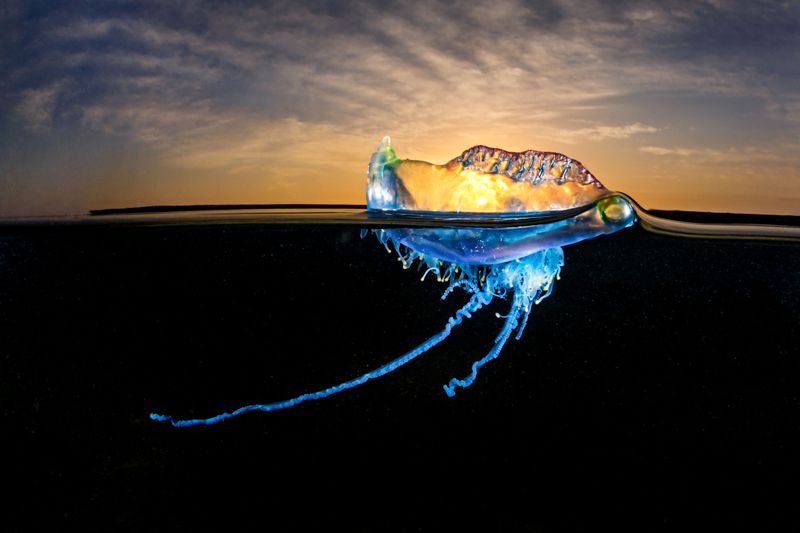
Ever wonder how these ocean drifters navigate? Their distinctive sail-shaped float acts like a natural sailboat, catching wind currents to propel them across vast ocean distances.
Fascinatingly, bluebottles come in left and right-handed varieties! This sail orientation determines which direction they travel in the same wind, ensuring population dispersal rather than all washing ashore together.
4. Tentacles That Pack A Punch

Those elegant trailing tentacles can stretch an astonishing 30 meters long in some species! Covered with thousands of microscopic stinging cells called nematocysts, they’re designed for instant paralysis.
When triggered, these tiny harpoons fire with an acceleration of 5 million g-force – one of the fastest biological processes on Earth. Small fish don’t stand a chance against this sophisticated hunting system.
5. The Portuguese Man O’ War Threat
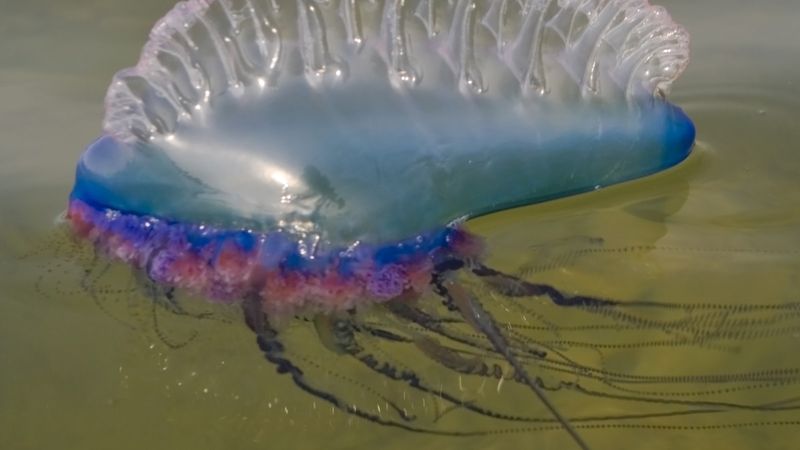
Among the four species, Physalia physalis reigns as the most infamous. With its distinctive cobalt-blue float that can reach 30 centimeters, this Atlantic dweller delivers excruciating stings that have hospitalized countless swimmers.
Unlike its smaller cousins, its venom contains neurotoxins potent enough to cause fever, shock, and even heart problems in vulnerable individuals. Beachside warning flags often appear when these dangerous beauties drift near.
6. The Pacific’s Smaller Terror
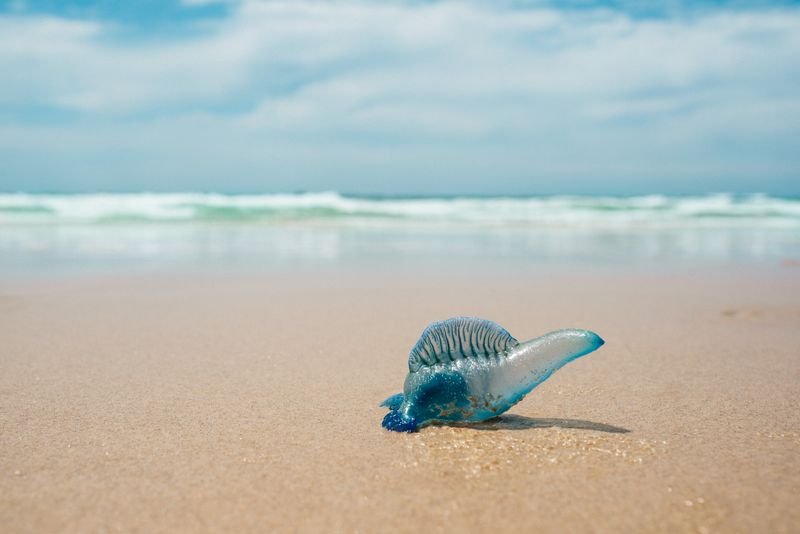
Don’t let size fool you! Physalia utriculus, the Pacific Man O’ War, may be smaller than its Atlantic cousin, but its sting still packs serious heat. Common along Australian and Asian coastlines, these blue menaces often arrive in armadas.
Their float rarely exceeds 10 centimeters, making them easier to miss until it’s too late. Summer beach closures throughout the Pacific frequently result from their unwelcome appearances.
7. Beauty In Blue

Mother Nature’s warning colors aren’t random – that vivid blue serves as a natural caution sign! The striking sapphire hue comes from specialized pigment cells that protect against harmful UV radiation.
When washed ashore, bluebottles often retain their color for hours before fading to transparent.
8. Beach Invaders After Storms

Strong onshore winds transform peaceful beaches into bluebottle danger zones. These creatures can’t swim against currents, so they’re completely at the mercy of wind and waves.
Australian beaches sometimes report over 10,000 stings in a single season! After summer storms, rangers often need to close popular swimming spots when bluebottle armadas arrive unexpectedly. Always check local warnings before diving in.
9. First Aid For Painful Encounters
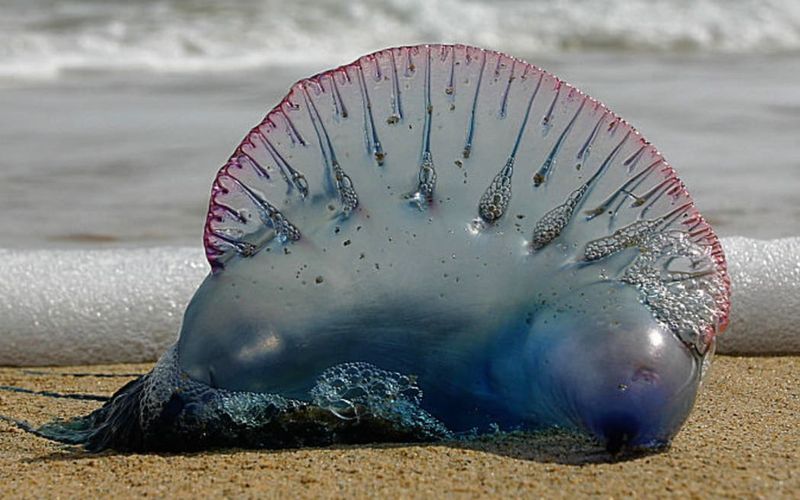
Contrary to popular belief, urine doesn’t help bluebottle stings! The most effective treatment is rinsing with seawater (never freshwater) and applying hot water around 45°C (113°F) to break down the heat-sensitive toxins.
Vinegar, effective for true jellyfish stings, actually makes bluebottle stings worse by triggering unfired stinging cells. Pain typically subsides within 30 minutes, though raised welts may persist for days.
10. Unexpected Ocean Allies
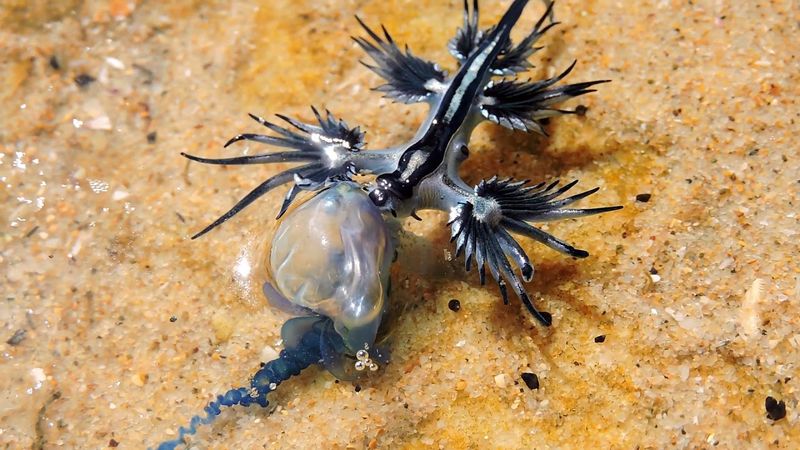
These feared ocean drifters actually have natural predators keeping their populations in check. Sea slugs like Glaucus atlanticus feast exclusively on bluebottles, somehow incorporating the stinging cells into their own defenses!
Loggerhead turtles munch bluebottles like underwater gourmets, completely immune to the venom. Even some fish species have evolved specialized mucus coatings that protect them while they nibble these dangerous delicacies.
11. Climate Change’s Rising Threat
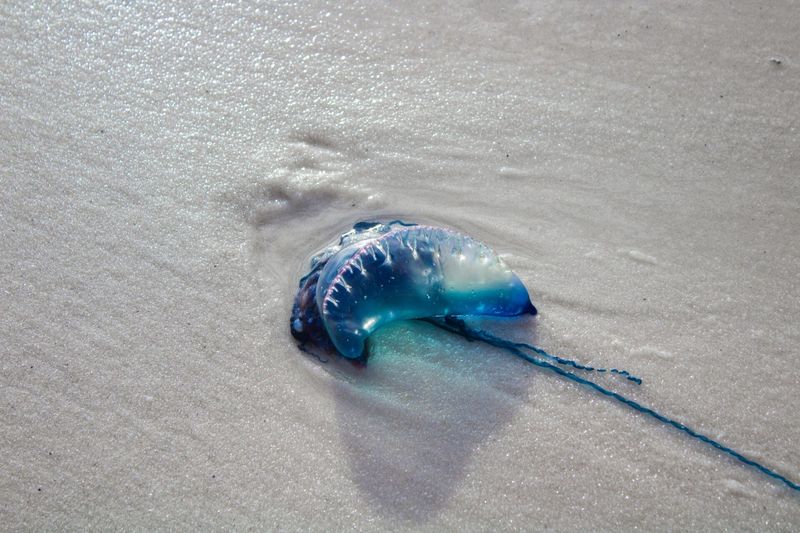
Warming oceans spell trouble as bluebottle populations explode in new regions. Scientists have documented concerning range expansions into previously bluebottle-free waters as currents and temperatures shift.
Japan reported a 250% increase in bluebottle encounters over the last decade! As these venomous voyagers colonize new coastlines, beach safety protocols worldwide are being updated to address this growing marine menace.

